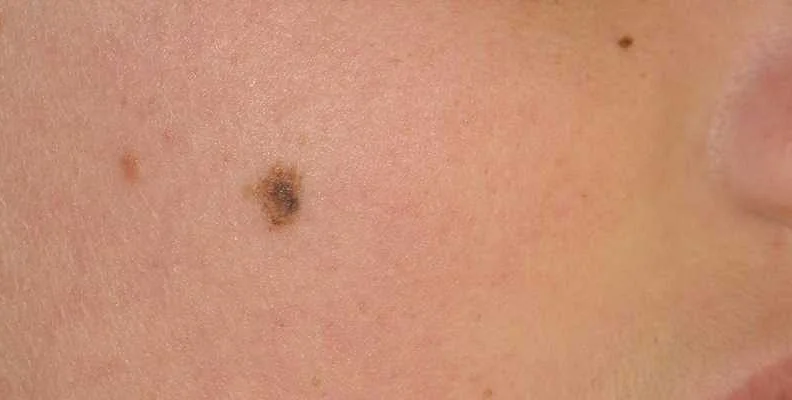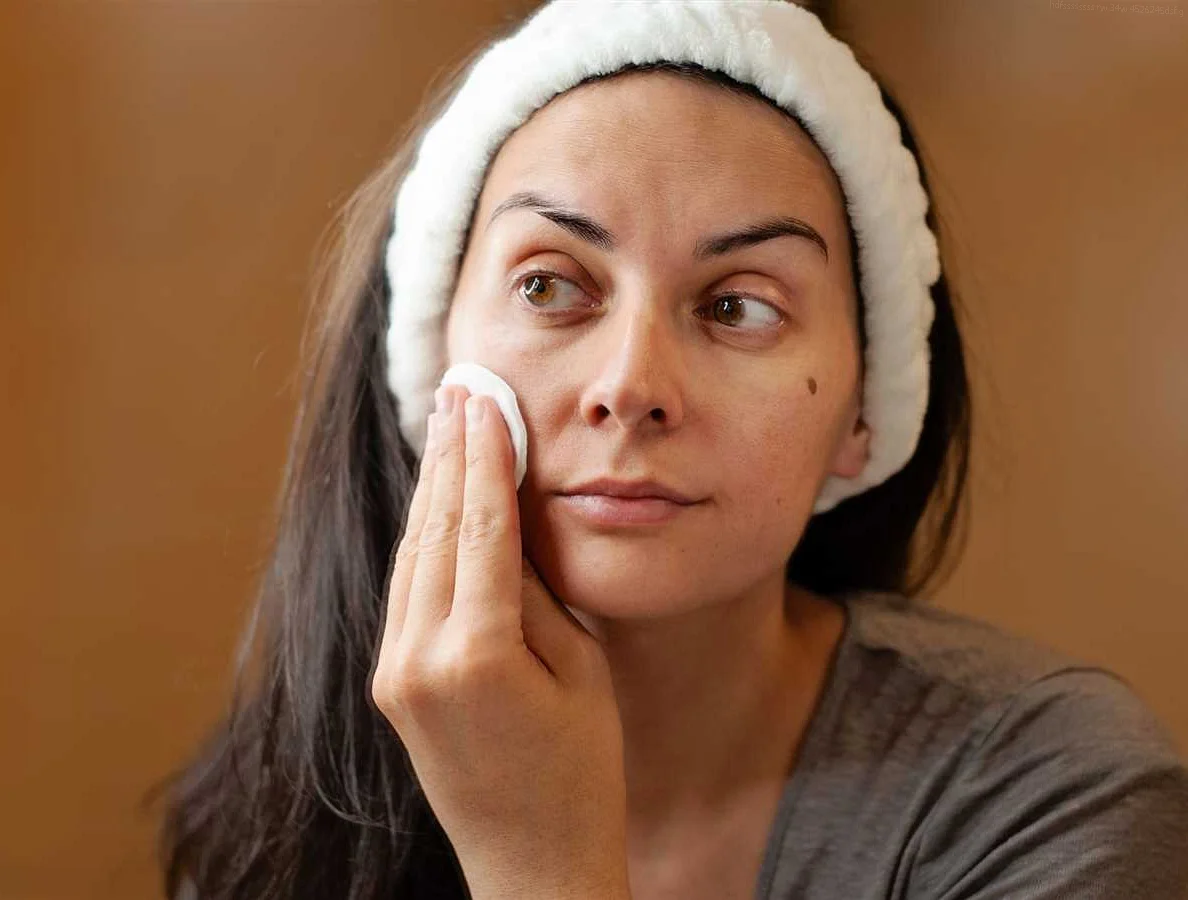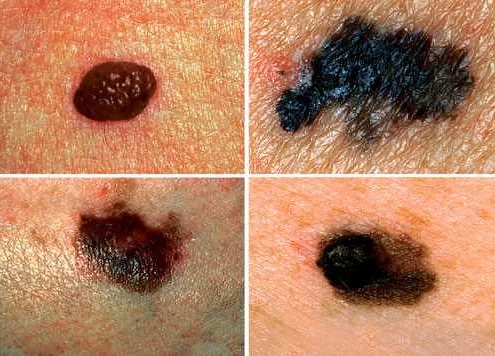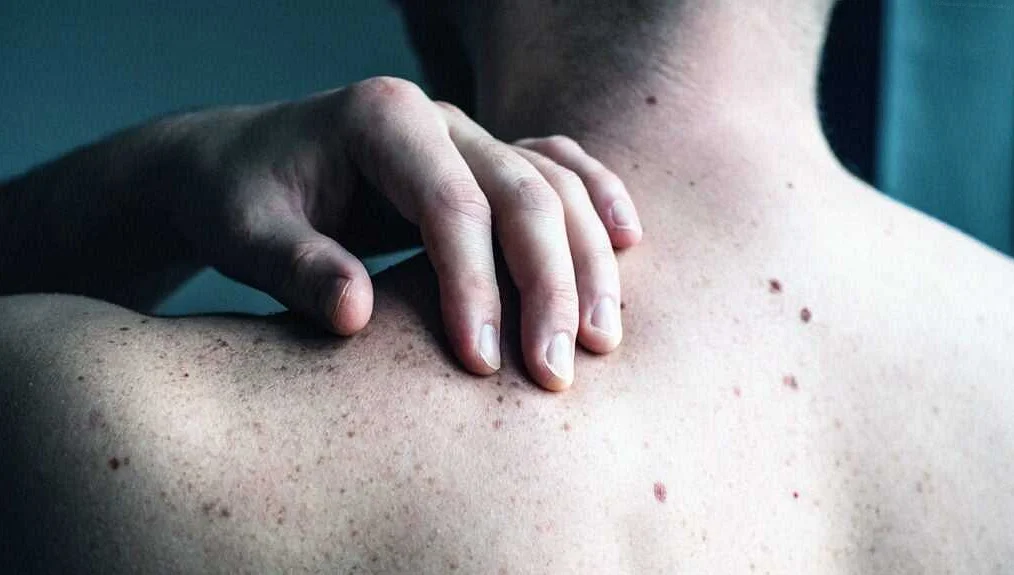Understanding the Pathways of Melanoma Development: Unraveling the Mystery Behind Mole Degeneration
Learn about the discovery of the underlying cause for the degeneration of a mole into melanoma, a deadly form of skin cancer. Understand the implications of this breakthrough in the field of cancer research and how it can potentially lead to improved diagnostic methods and treatment options for melanoma patients.
It is a well-known fact that moles, also known as nevi, are common skin growths that can appear on any part of the body. While most moles are harmless, some may undergo transformation and develop into melanoma, a type of skin cancer. Understanding the underlying causes behind this transformation is crucial in order to develop effective prevention and treatment strategies.
Recent research has shed light on the molecular mechanisms that drive the transformation of moles into melanoma. It has been discovered that certain genetic mutations, such as mutations in the BRAF gene, play a key role in this process. These mutations can lead to uncontrolled cell growth and division, resulting in the development of cancerous cells.
In addition to genetic mutations, other factors such as exposure to ultraviolet (UV) radiation and a weakened immune system can also contribute to the transformation of moles into melanoma. UV radiation, especially from excessive sun exposure or tanning beds, can damage the DNA in skin cells and increase the risk of developing melanoma. A weakened immune system, whether due to certain medications or medical conditions, can also impair the body’s ability to recognize and eliminate cancerous cells.
Further research is needed to fully understand the complex interplay between genetic mutations, UV radiation, and the immune system in the transformation of moles into melanoma. By unraveling these underlying causes, scientists hope to develop targeted therapies and interventions that can prevent or treat this deadly form of skin cancer.
The Intriguing Process of Mole Transformation into Melanoma

Understanding the transformation of a benign mole into a deadly melanoma has been a subject of extensive research in the field of dermatology. This process, although complex and multifactorial, sheds light on the pathogenesis of melanoma, providing valuable insights into early detection, prevention, and treatment strategies.
Moles, also known as nevi, are typically harmless pigmented spots on the skin composed of melanocytes. Melanocytes are specialized cells responsible for producing melanin, the pigment that gives color to our skin, hair, and eyes. In most cases, moles do not pose any significant health risks. However, certain factors can trigger the transformation of a mole into melanoma, a type of skin cancer that can metastasize and be life-threatening.
One of the major factors contributing to mole transformation is ultraviolet (UV) radiation from the sun or artificial sources like tanning beds. UV radiation damages the DNA in skin cells, including the melanocytes within moles, leading to genetic mutations. These mutations can disrupt the normal growth and behavior of cells, causing them to grow uncontrollably and form a malignant tumor.
Another key factor in mole transformation is the presence of dysplastic nevi, also known as atypical moles. Dysplastic nevi are moles that exhibit certain abnormal features such as asymmetry, irregular borders, varying colors, and larger size. People with numerous dysplastic nevi have an increased risk of developing melanoma, as these atypical moles are more prone to malignant transformation.
Additionally, certain genetic factors play a role in the transformation of moles into melanoma. Mutations in genes such as BRAF, NRAS, and CDKN2A have been linked to the development of melanoma. These genetic alterations can disrupt important signaling pathways involved in cell growth and division, contributing to the malignant transformation of moles.
The process of mole transformation into melanoma involves a series of steps. Initially, a benign mole undergoes architectural changes, such as an increase in size, irregularity in shape, and variation in color. This transformation may be accompanied by the development of dysplastic features. As the mole progresses towards melanoma, cellular changes occur, including alterations in the melanocytes’ morphology and abnormal growth patterns. Eventually, the transformed mole can invade surrounding tissues and metastasize to distant organs.
Understanding the intricate process of mole transformation into melanoma is crucial for early detection and intervention. Regular skin checks, especially for individuals with a high number of moles or dysplastic nevi, can aid in the timely identification of potential melanomas. Additionally, avoiding excessive UV exposure and practicing sun-safe behaviors, such as wearing protective clothing and using sunscreen, can reduce the risk of mole transformation into melanoma.
| Ultraviolet (UV) radiation |
| Dysplastic nevi |
| Genetic mutations |
Understanding the Origins of Melanoma

Melanoma, a type of skin cancer, arises from a transformation of normal skin cells called melanocytes. These cells produce a pigment called melanin, which gives color to the skin, hair, and eyes. Melanoma occurs when the melanocytes undergo genetic changes that cause uncontrolled growth and the formation of cancerous tumors.
One of the main risk factors for developing melanoma is exposure to ultraviolet (UV) radiation from the sun or tanning beds. UV radiation can cause damage to the DNA in skin cells, leading to genetic mutations that can trigger the development of melanoma. People with fair skin, freckles, and a history of sunburns are more susceptible to the damaging effects of UV radiation, making them at a higher risk for melanoma.
Another risk factor for melanoma is having a large number of common moles, also known as nevi. These moles are usually harmless, but individuals with a high number of moles have an increased risk of developing melanoma. It is believed that this is because the same genetic changes that occur in melanoma also contribute to the formation of moles. However, not all moles will transform into melanoma, and additional genetic and environmental factors likely play a role in this transformation process.
In addition to UV radiation and the number of moles, there are other factors that can contribute to the development of melanoma. These include a family history of melanoma, a weakened immune system, and certain genetic conditions, such as xeroderma pigmentosum and dysplastic nevus syndrome.
Understanding the origins of melanoma is essential for early detection, prevention, and treatment. Researchers continue to study the genetic and environmental factors that contribute to the transformation of moles into melanoma in order to develop better diagnostic tools and targeted therapies. By identifying individuals at high risk for melanoma and promoting sun safety measures, we can reduce the incidence and mortality rates associated with this deadly disease.
Recognizing the Warning Signs of Mole Transformation

Regular self-examination of your skin is crucial for detecting any changes in moles that could indicate transformation into melanoma. By familiarizing yourself with the warning signs, you can take the necessary steps to seek medical attention promptly. Here are the key indicators to look out for:
| Change in size | If the mole grows larger than 6 millimeters in diameter or there is a noticeable increase in size, it may be a cause for concern. |
| Change in color | Any changes in the color of a mole, such as darkening, becoming uneven, or developing multiple shades, should be carefully monitored. |
| Irregular borders | Normal moles have smooth, well-defined edges. If the borders of a mole become irregular or blurred, it could be an indication of transformation. |
| Asymmetry | Melanoma lesions are often asymmetrical, meaning one half does not match the other half. Pay attention to any new or existing moles that exhibit this characteristic. |
| Evolution | Any evolution in the appearance of a mole, such as changes in size, color, or shape, should be taken seriously. |
| Elevation | If a mole becomes raised or develops a lump, it may be a sign of melanoma. |
| Bleeding or itching | Unusual bleeding, itching, or any other symptoms in a mole should prompt a medical evaluation. |
If you notice any of these warning signs, it is important to consult a dermatologist or healthcare professional for further evaluation. Early detection and treatment are crucial in preventing the progression of melanoma.
The Role of UV Radiation in Melanoma Development

Melanoma, the most aggressive form of skin cancer, is primarily caused by exposure to ultraviolet (UV) radiation. UV radiation, specifically UVB and UVA, can directly damage the DNA in skin cells, leading to genetic mutations that can trigger the development of melanoma.
UVB radiation is the most carcinogenic form of UV radiation and is responsible for causing sunburns. It is absorbed by the superficial layers of the skin and damages the DNA, leading to the formation of pyrimidine dimers. If these DNA lesions are not repaired properly, they can result in mutations that can initiate melanoma development.
UVA radiation, on the other hand, can penetrate deeper into the skin and cause indirect DNA damage by generating reactive oxygen species (ROS). These ROS can cause oxidative stress, leading to DNA damage and mutations. UVA radiation also contributes to the production of melanin, the pigment responsible for skin color, which can act as a protective mechanism against UVB radiation but can also promote the development of melanoma.
Excessive exposure to UV radiation, whether from the sun or artificial sources such as tanning beds, increases the risk of developing melanoma. Individuals with fair skin, light-colored eyes, and a family history of melanoma are particularly susceptible to the harmful effects of UV radiation. Protecting the skin from UV radiation by using sunscreen, wearing protective clothing, and seeking shade during peak sun hours is crucial in preventing melanoma development.
In conclusion, UV radiation plays a central role in the development of melanoma. Understanding the mechanisms by which UV radiation induces DNA damage and mutations can help in the development of strategies to prevent and treat melanoma effectively.